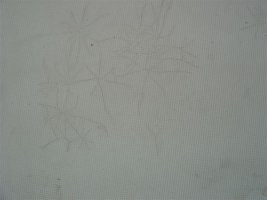Crazing issue (going crazy?)
Greetings back,
What you most likely have is an overly thick gelcoat. Bad crazing is usually a sign of over zealous spraying of gelcoat prior to lay-up. After many years in the sun and eventual curing, it cracks due to the different hardnesses of the gelcoat and underlayment. The problem is, that if most of the overly rich gelcoat is not removed, the crazing will eventually resurface through the nice paint job. I too have some deck crazing, but live with it as I don't like creating large maintanance jobs down the road (eg. re-painting the deck every 5 years or so). That's my personal preference. I did have delamination on the foredeck (and elsewhere) which has all been repaired though.
However, this brings up another issue which causes extensive crazing and that's a soft core (delamination) which results in the deck flexing and the gelcoat to crack/craze. Although you had the deck metered, it is not always accurate (operator issues usually) and possibly the deck was previously wet, has dried out but the delamination is still present (it never goes away once it occurs unless fixed). You'll need to do a percussion test of the deck with a soft hammer (plastic tipped), or a screwdriver handle. Tapping the deck with such a tool will give you either a solid 'thunk', which is good core, or a dull 'thud' which is a delamination area.
You don't mention where the predominance of crazing is located, but check around deck penetrations (stanchions, sail tracks, etc.), foredeck and other areas for soft core and see if that is causing the problem. Simply painting over the problem will be an expensive lesson in delamination if present.
John M.

